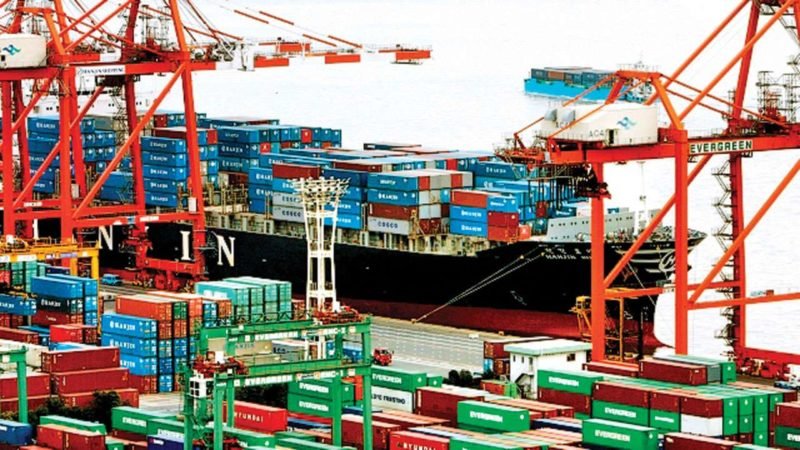Trade War, COVID-19 and India

Personal behaviour, Societal norms and International system, cutting across every aspect of life, is going through an unprecedented crisis of kind neither seen before nor foreseen ahead (at least to the present generation). Till date (19 May’20) Novel Coronavirus (COVID-19) has taken a toll on more than 48,88,000 people of which more than 19,05,000 have been recovered, more than 3,20,000 have died and more than 26,62,000 person are still infected with the virus. Being at the helm of international affairs, instead of dealing collectively with the pandemic, the rivalry between the two largest economies (the USA and China) has claimed international news headlines, first, with Trade war before the advent COVID-19, and then with tit-for-tat blame game regarding the origin of Coronavirus. This article tries to explore the ongoing crisis in international politics and where India can actually board the bus towards development which it missed earlier.
Historical context
It remains quite paradoxical that very essence of US socio-economic structural framework which is based on Democratic Capitalism is arguably dependent (albeit certain sectors) on a Communist socio-political structured nation, China. Chinese politico-economic model is sui generis. Its unprecedented rise from slumber, acknowledgement by the world community as a manufacturing heavyweight (2001 WTO accession) and its position today where it is posed to challenge US superiority in almost every sector (except military) be it artificial intelligence, space technology, telecommunication, thriving gaming network etc., is in part, fuelled by the USA itself. In a bid to expand the capitalist network and to ensure extreme prosperity, US entrepreneurs started shifting their manufacturing base to cheap labour and relatively stable markets such as China, Mexico, Brazil etc. It was fuelled by three-factor, that are, maturity level of US industries to the point where innovation was less a competitive factor than the low cost, Deng Xiaoping’s transformational economic reforms and Chinese huge thriving market with cheap low skilled labour. These factors charmed the US to bring Chinese into the international trading regime with a tripartite objective. These were, gaining fruits from the thriving economy and huge market, change in the Chinese political system moving towards Democracy and putting to rest the claim of Chinese revisionist strength.

US President Bill Clinton said in 2001, “Today the House of Representatives has taken a historic step towards continued prosperity in America, reform in China and peace in the world… it will open new doors of trade for America and new hope for change in China.” This statement of extreme optimism and risky action fuelled by western traditional state evolutionary theory, turned upside down when frightened USA opposed what was agreed under section-15 of Chinese Instrument of accession to WTO in 2001 which said ‘country’s upgrade as the market economy is automatic after completion of 15 years of its WTO membership. Assumption based on the lines of Russian perestroika and Glasnost, USA expected that economically well off Chinese middle class would overthrow the Communist political system and would welcome Democracy with both hands. But far from US expectation, China in 2016 was a well-recognised economic superpower with GDP next only to the USA (it was ranked 6th when it joined WTO) with an ambition to rule information technology revolution, had a thriving space program and was a global bidder for upcoming 5G technology. In the strategic domain, China under Xi Jinping leadership has embarked to revive the ancient Silk Road Initiative in a new version named ‘Belt and Road Initiative’ with trans-continental land and sea route connectivity.

The genesis of the trade war
Two decades down the line (2001: Chinese accession to WTO), USA’s socio-economic prosperity to some extent, arguably, dependent on Chinese thriving manufacturing base. This is evident by the fact that bilateral trade between two giants in 2019 was almost US$560 billion out of which Chinese goods export to the United States amounted to 452 billion US dollars and US exports were 106 billion US dollars.
Having discussed the structural economic dynamics and their respective position in global power politics, let’s dwell upon the origin of the trade war. It all started with Donald Trump election campaign claim to reduce whooping more than 350 billion US dollar trade deficit when elected to power. On the pretext of Chinese unfair trading practise such as intellectual property theft, forced technology transfer, lack of market access to American companies in China and unlevel playing field caused by Chinese subsidies to select domestic companies, USA imposed 25 per cent tariff on 50 billion US dollar imports from China mainly on transport and electronic goods. This prompted China to impose a retaliatory tariff on imports from the USA mainly on agriculture, beef and dairy products. 4 months down the line, the US increased tariff on some 250 billion US dollars and announced a plan for the third round of increase before the first phase of China-US Trade Deal in January 2020 was materialised. This was happening in the midst of global market unrest fuelled by events such as US unilateral withdrawal from JCPOA, a standoff between the United States and Turkey (a NATO ally), the downfall of crude oil prices after bombing of Saudi Armaco oil processing facility at Abqaiq and khurais. All these flow of events, as well as the global economy, came to a standstill with the advent of Novel Coronavirus. Now the stage is all set and the only player, COVID-19, is running the show.
It is frightening to recon that almost a century back, after 1st world war, this trade war with tit-for-tat tariff was one of the causes leading to The Great Economic Depression of 1929, still, this historic evidence of ensuing catastrophe of such a practice has not bothered powers to indulge in economic power politics.

Opportunities for India
One of the direct impacts of this trade war has been on US companies having a large industrial base in china positioning it to produce almost 25% of global manufacturing goods. COVID-19 has also forced investors to diversify manufacturing sources. According to the US India Strategic and Partnership Forum (USISPF), about 200 companies are seeking to move the manufacturing base from China to India. Although South-East Asian countries are more favourites than India currently but there are few sectors where India can really accelerate the economic and diplomatic offensive. Indian Pharmaceutical industry market is the third largest and manufactures almost 60% of global vaccine requirement. In a sense, today in COVID-19 phase, the entire globe has turned into its market. All manufacturing labour-intensive industries such as textile industry, electronic industry, assembling industry etc. if met with certain firm reforms, logistical and infrastructural requirements, can fetch India a substantial portion of global exports which at present is at 1.63% of global trade. Recently, Apple’s iPhone manufacturers, Foxconn has decided to shift 20% of production from China to India. As per the estimates of the United Nations Conference on Trade and Development, the Indian economy can benefit almost 11 billion US dollars from these trade shifts. Japan has set aside 2.2 billion US dollar for its firms to shift their manufacturing base from China in the wake of supply chain disruption due to coronavirus pandemic.
However, tackling long-standing infrastructural and reform challenges are a precondition to grab these opportunities. Land laws and labour regulations are the two biggest hurdle for foreign manufacturing giants in India. There are interstate lack of coordination issue with land laws and more than 40 labour laws are to be strictly adhered to, had made investor more uncomfortable. Recently the Indian government has culminated all labour laws under 4 labour codes, a step in the required direction. Indian pharmaceutical industries are heavily dependent on Chinese import of APIs (Active Pharmaceutical Ingredients). Also, there are logistical issues (like road, railways and port infrastructure) and environmental concerns to avoid cases like Bhopal Tragedy 1984, LG Polymer styrene gas leak 2020 at Vishakhapatnam etc.

Conclusion
At current phase of International politics which is marked by economic globalisation and political power play, the rivalry between China and USA and their tit-for-tat retaliatory posture, gives legitimacy to the fact that both are now a global competitor and are competing at equal footing. Hence, it can be assumed safely that we are currently at the transitional phase of the global system. In this transitional phase, events like trade war, COVID-19 etc. brings with it a golden bait for India. Ceded place of transparency and legitimacy by China (due to concealed information on COVID-19) can, in all probability, be acquired by India. Opportunities are knocking the doors. Three steps can turn the wheel of the bus which India missed long ago. First, a comprehensive structural framework through overall review of domestic business environment consulting all the relevant stakeholders including trade unions, corporates, environmentalists, legal fraternity, economists etc. Second, an extensive and swift diplomatic offensive in negotiating terms with major industrial powers like South Korea, Japan, Singapore, Israel etc. to invest in India. Lastly, reconsider the decision on RCEP and renegotiating terms with the aim of building a thriving manufacturing base in the country itself without compromising the interest of the agricultural sector.
21st century is said to be ‘Asian century’. The Asian success story is inexorably linked to India’s growth story. The world got Europeanized in the 19th century, Americanised in the 20th century and now it’s time for Asianization of the world in the 21st century.


















